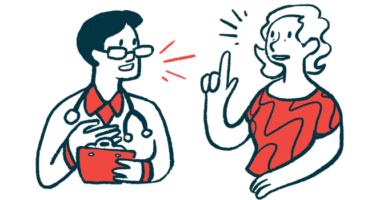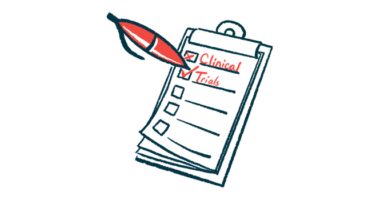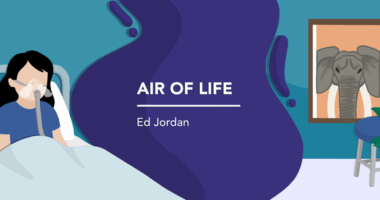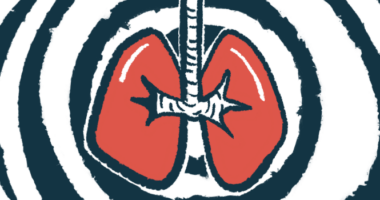
Understanding airway clearance techniques for CF
Last updated July 15, 2025, by Agata Boxe

Airway clearance techniques (ACTs) are an important part of managing cystic fibrosis (CF).
ACTs can help clear the sticky mucus buildup in the lungs caused by CF. They can also ease breathing and help prevent certain complications, such as chronic lung infections, respiratory failure, and hospitalizations.
There are several ACT options. Your CF doctor can help you decide which one might be the best for you to try, based on various factors, including your personal preference.
Active cycle of breathing technique (ACBT)
Common CF symptoms from mucus buildup in the lungs include frequent coughing and chest congestion, which ACTs can help to prevent or address.
ACBT is one method and involves different techniques that work together to help clear mucus from the lungs. It works in three stages by:
- relaxing airways
- getting air behind the mucus
- using pressure from the air to push mucus out of the lungs.
These steps can be achieved through controlled breathing, chest expansion exercises, and huff coughing.
- Controlled breathing involves breathing in and out mindfully to relax the airways.
- Chest expansion exercises involve breathing in deeply and exhaling in a controlled manner without forcing the air out.
- Huff coughing at varying, controlled durations helps expel mucus from the lungs.
Autogenic drainage
Autogenic drainage, also called self-drainage, involves changing breathing speeds to dislodge and get rid of mucus.
It typically involves three stages and starts with sitting in a relaxed position. A respiratory therapist can teach you how to use this technique to control your breath.
- Phase 1 aims to move the mucus from the small airways by “unsticking” it through breathing in and out as instructed by your respiratory therapist.
- Phase 2 moves the mucus from the small to the medium-sized airways through breathing in, holding your breath, and breathing out as instructed.
- Phase 3 pushes mucus from the medium-sized airways to the large airways so it can then be coughed out.
Coughing and huffing
ACTs can also help address CF-related shortness of breath and fatigue, which can worsen when mucus isn’t cleared regularly. While coughing helps move mucus out of the large airways, getting mucus out of the small airways needs a different ACT.
Huffing or cough huffing involves breathing in deeply, holding the breath, and forcefully breathing out. These techniques are usually combined with other methods of clearing the airways to work as effectively and thoroughly as possible.
Chest physical therapy
CPT involves changing positions so gravity can help mucus drain from the lungs. Once you are in one of these positions, a caregiver or a respiratory therapist can clap or vibrate your chest to further help move the mucus out.
Common positions include:
- the Trendelenburg position, where you lie on your back with your head lower than your chest
- lying on one side to use gravity to drain mucus from the opposite lung
- sitting upright and leaning forward slightly.
CPT is most effective when another person assists you by clapping or vibrating your chest. However, it is also possible to try it on your own. For example, your doctor may suggest using a handheld device that mimics clapping.
High-frequency oscillating vest
CF symptoms, such as sinus issues and frequent lung infections, can be a sign that you should be doing regular airway clearance.
One commonly used ACT technique for CF involves wearing an inflatable vest with a hose that attaches to a machine. The machine does a version of chest physical therapy by vibrating the chest to loosen and thin mucus.
Each session typically lasts about 20 to 30 minutes, with pauses every 5 minutes to allow you to cough or huff to expel the mucus.
Positive expiratory pressure (PEP)
PEP uses air pressure to open up the airways, allowing mucus to move from the smaller airways into the larger airways.
It involves breathing through a mask or a hand-held mouthpiece. You breathe in normally, but forcefully exhale to help push the mucus out.
Oscillating positive expiratory pressure (OPEP)
OPEP uses a device that involves vibrations and resistance when exhaling to help expel mucus.
The vibrations help clear mucus from your airways and the resistance encourages you to exhale more forcefully. After exhaling several times, you need to huff cough to clear the mucus from the body.
Finding the best technique for you
There is no “one size fits all” with ACTs. Effective airway clearance for CF often involves trial and error to find the right approach.
In some cases, your doctor or respiratory therapist may recommend a combination of techniques. They may also suggest combining ACTs with medications and lifestyle adjustments, such as exercise, for optimal benefits.
ACTs play a vital role overall in managing CF. With your care team’s guidance, you can find one or more techniques that work best for your symptoms, lifestyle, and personal preferences.
Cystic Fibrosis News Today is strictly a news and information website about the disease. It does not provide medical advice, diagnosis, or treatment. This content is not intended to be a substitute for professional medical advice, diagnosis, or treatment. Always seek the advice of your physician or other qualified health provider with any questions you may have regarding a medical condition. Never disregard professional medical advice or delay in seeking it because of something you have read on this website.
Your CF Community

Visit the Cystic Fibrosis News Today forums to connect with others in the CF community.
Recent Posts
- Trikafta helps cystic fibrosis patients reduce supportive treatments: Survey December 23, 2025
- Genetic analysis points to new clues behind pain in cystic fibrosis December 22, 2025
- CF gene therapy 4D-710 shows signs of improving lung function in early trial December 18, 2025
- My late daughter is still teaching me resilience today December 17, 2025
- Small study finds GLP-1 drugs boost lung function in CF patients December 16, 2025




